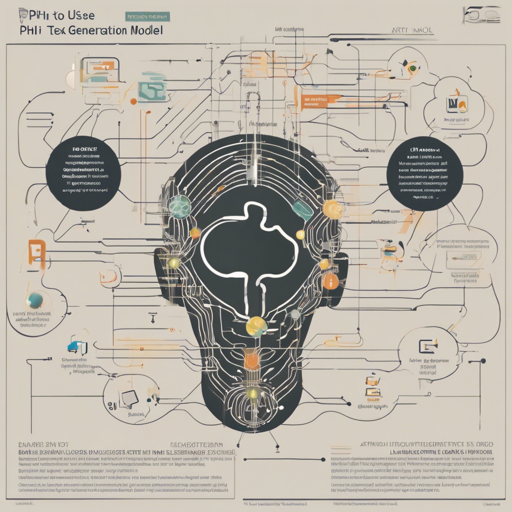The Phi-Bode language model is an interesting development in the world of artificial intelligence, specifically tailored for the Portuguese language. With the aim of making large language models (LLMs) accessible to users lacking significant computational resources, it has some engaging features and performance benchmarks. In this article, we’ll take you through how you can leverage this model for text generation and address common troubleshooting issues!
Understanding the Phi-Bode Model
The Phi-Bode model is based on Microsoft’s Phi-1.5B, boasting 1.3 billion parameters. It’s been fine-tuned using the UltraAlpaca dataset. This model is an ongoing project, so while it’s powerful, there might still be some hiccups in generating flawless text in Portuguese.
Key Features
- Base Model: Phi-1.5B, courtesy of Microsoft.
- Dataset for Fine-tuning: UltraAlpaca
- Training Approach: Complete fine-tuning of the base model.
Using the Phi-Bode Model for Text Generation
To generate text using the Phi-Bode model, you will need to configure the model parameters, input your dataset, and call upon the model to produce the desired text. Here’s a simplified analogy to illustrate how it works:
Imagine baking a cake. The base model (Phi-1.5B) is your cake batter, which alone isn’t very tasty. The fine-tuning (using UltraAlpaca) is like adding frosting and decorations to make the cake appealing and delicious for your guests (users). The result is a delightful creation tailored to everyone’s tastes!
Performance Evaluation
The Phi-Bode model has been evaluated across several benchmarks, and here are some of its noteworthy accuracy scores:
- ENEM Challenge (No Images): 23.58
- BLUEX (No Images): 20.72
- OAB Exams: 24.87
- Assin2 RTE: 69.07
- Assin2 STS: 4.94
- FaQuAD NLI: 43.97
- HateBR Binary: 34.94
- PT Hate Speech Binary: 41.23
- tweetSentBR: 24.19
Troubleshooting Tips
If you encounter issues with the Phi-Bode model, consider these troubleshooting suggestions:
- Model Performance Issues: As the model is still in development, be mindful of its limitations in generating coherent Portuguese text.
- Data Compatibility: Ensure that your dataset aligns well with the model’s fine-tuning parameters for optimal results.
- Resources: Lacking enough computational resources can hinder the model’s performance—consider running it on a cloud service with higher specs.
- Documentation: Always refer back to the Open Portuguese LLM Leaderboard for the latest insights on model updates and evaluations.
For more insights, updates, or to collaborate on AI development projects, stay connected with fxis.ai.
Conclusion
The Phi-Bode model is an exciting step towards democratizing access to advanced language models for Portuguese speakers. While it still has avenues for improvement, its architecture and features provide a solid foundation for diverse applications in text generation.
At fxis.ai, we believe that such advancements are crucial for the future of AI, as they enable more comprehensive and effective solutions. Our team is continually exploring new methodologies to push the envelope in artificial intelligence, ensuring that our clients benefit from the latest technological innovations.

